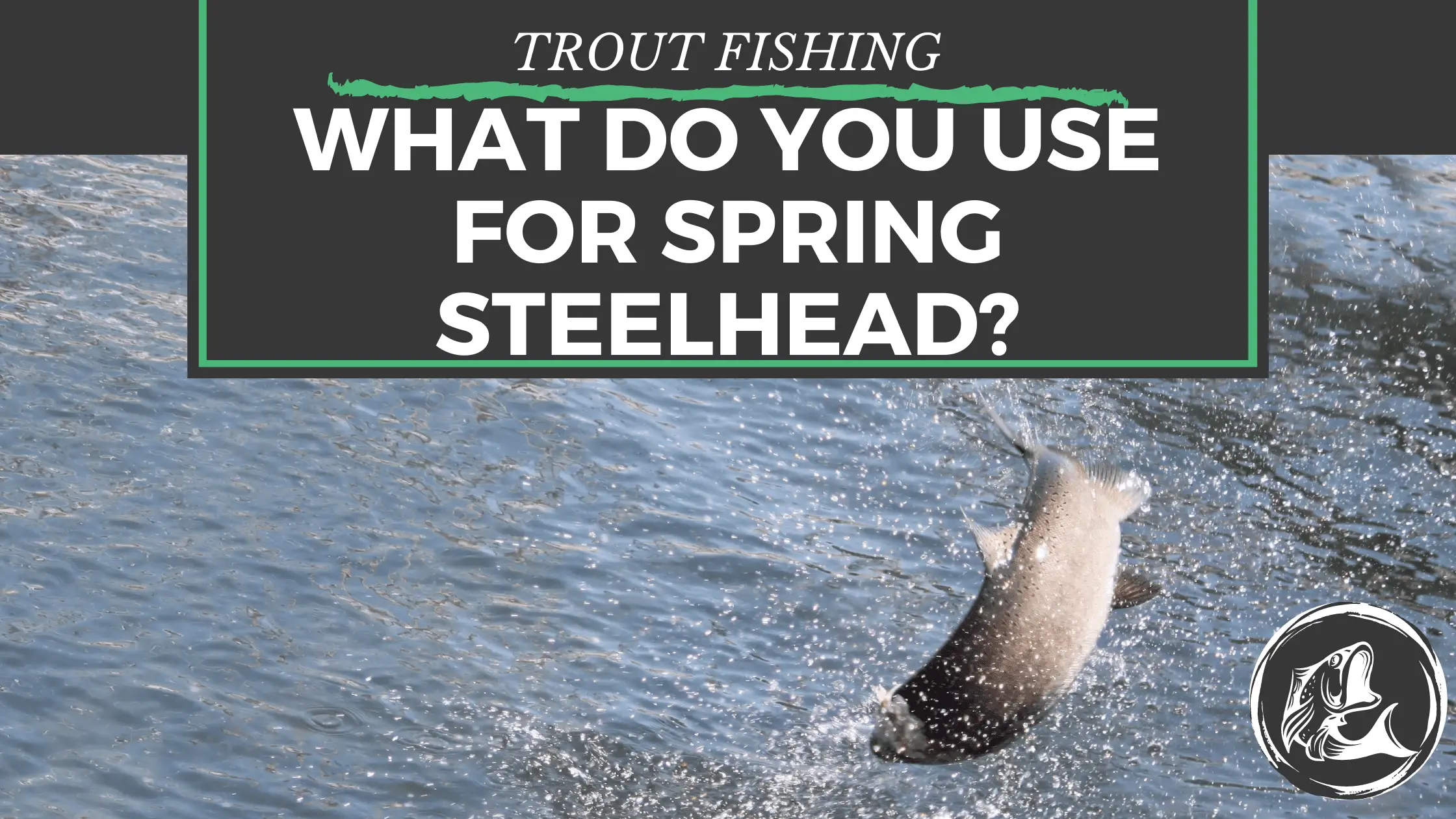Steelhead fishing in the spring can range from ice-cold rivers in late February to steelhead spawning grounds in late March and early April, and steelhead returning to the lake in April and May. Excellent anglers will use various methods and baits to adapt and catch more steelhead.
Guides employ various fishing techniques, which are usually different in various seasons of the year. Adaptability is essential for catching steelhead, but it’s even more so in the spring. What is the best way to fish for spring steelhead? The short answer is use Nightcrawlers, Mag lips, Spinners and Nymphs but keep on reading to know more.
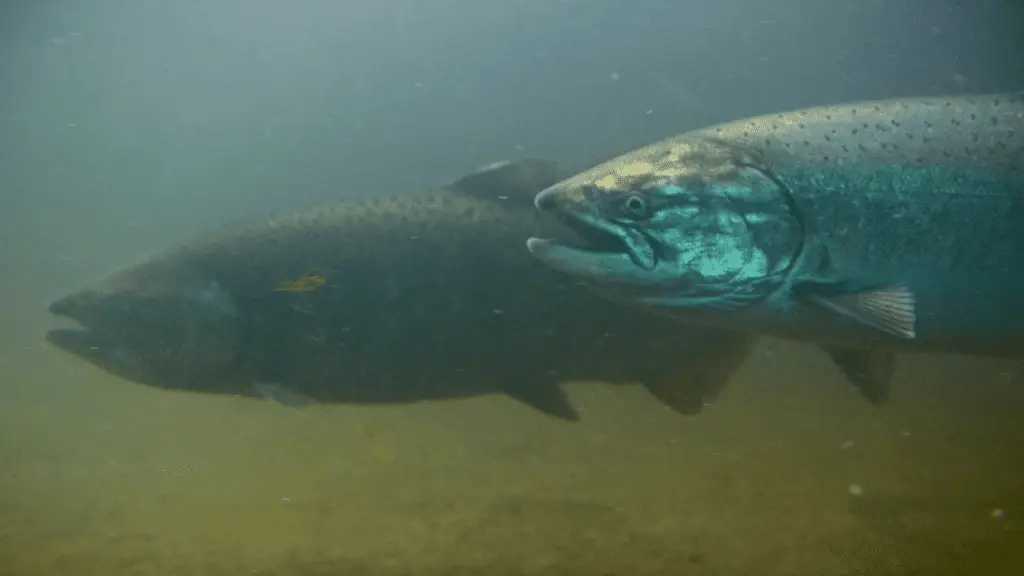
A Little Background On Spring Steelheads
Steelhead fishing in the spring is not the same as steelhead fishing in the fall. The variation is related to several factors, including water temperature, the desire to spawn, and food availability.
In the fall, steelhead begins to migrate into the rivers. The availability of food and the urge to reproduce are their driving forces. Salmon spawn releases millions of eggs into the river, which steelhead eat.
Steelheads are almost impossible to catch on anything other than egg imitations during the salmon spawn. Additionally, Steelhead spawning doesn’t happen until the spring.
Nobody knows why steelhead ascends the river in August and September to consume steelhead eggs and then stay after the eggs are gone.
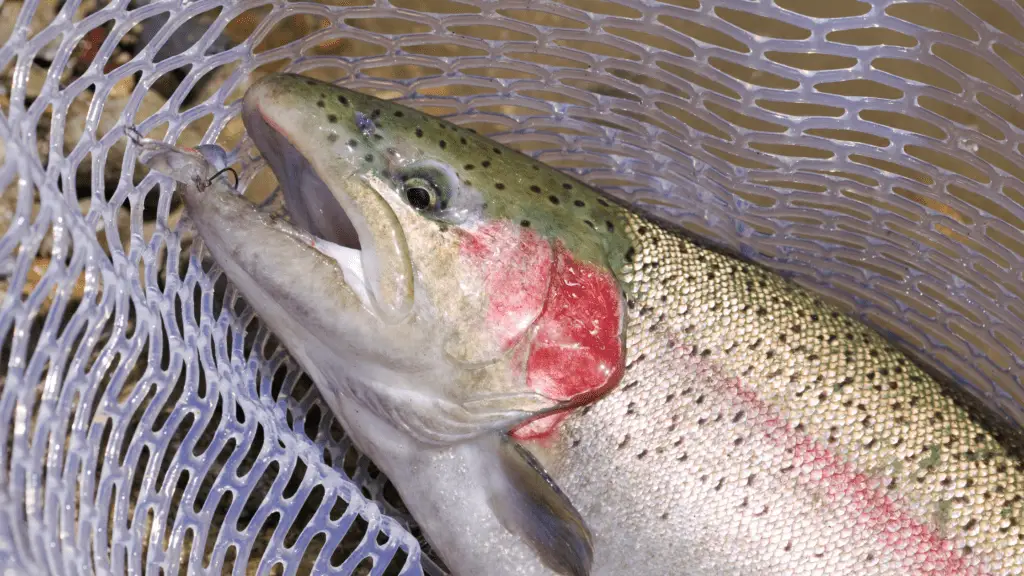
What is the best way to fish for steelhead?
Keeping an optimistic mindset should help in fishing for Steelhead. Have confidence in the water and the lure or bait you’re throwing. Aside from that, anglers can use any of the following strategies to catch steelhead:
1. Drift Fishing
A heavyweight is used to bounce the bait or lure along the bottom. The goal is to keep the bait towards the bottom of the water and float with the current. This method is tough to learn because it requires identifying tiny steelhead takes. Still, it is one of the most popular steelhead fishing strategies because of its accuracy.
2. Plunking
At the water’s bottom, a heavyweight holds bait or a plug steady. This is an excellent strategy when water levels are very high, and steelhead are holding or swimming in soft waters near the shore. Anglers with limited mobility will benefit from this technique.
3. Spinners
Many anglers are experienced with the throw and return technique, but those who learn the throw and swing technique have a better chance of catching steelhead. This includes casting the spinner slightly above, allowing it to drift naturally in the current, and then swinging it back toward the shore.
4. Pulling plugs
A plug is a plastic lure that flexes and crashes in the water. Plugs can be cast from the riverbank and slowly swing in the water, rather than being dragged behind a boat where they can shift and wiggle in the water as the boat flows downward.
5. Fly-fishing
Steelhead fishing is a difficult but rewarding activity. Anglers swing flies through the river with single or double-handed rods or drift a nymph towards the bottom with a nymph/indicator rig.
But, whichever gear you use, make sure you get out on the water. Keep your lure or bait near the bottom and fish every area of a run or pool carefully. If you get to know a river and perfect your technique, you’ll catch more fish than if you chase after every “hot lead.”
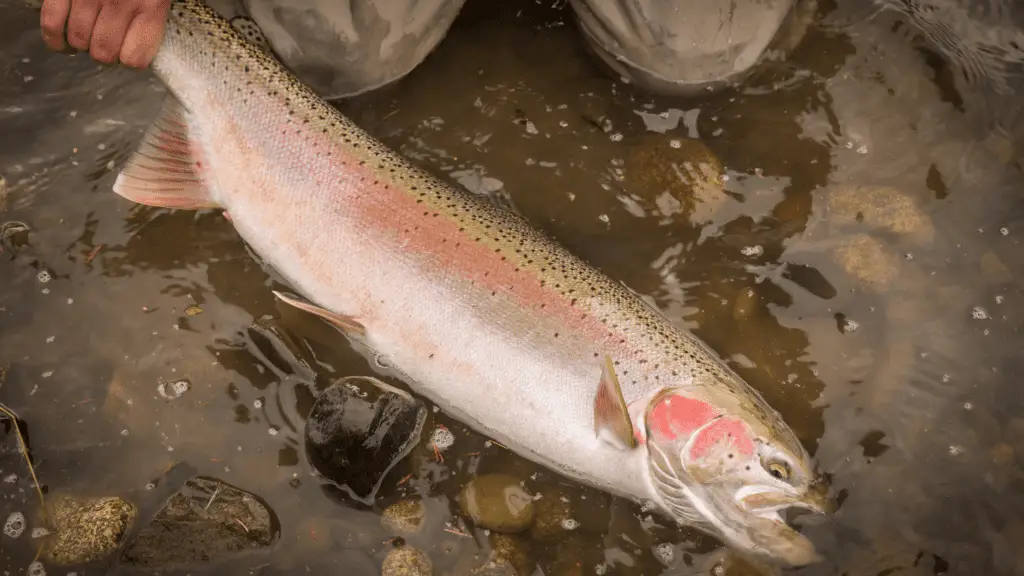
What are the best lures for spring steelhead?
Spinners, spoons, plugs, and crankbaits are the top lures for steelhead, and if you apply these helpful tips, you’ll catch more steelhead with them. Steelheads aren’t always aggressive, but some baits will give more bites than others, so it’s a good idea to have different baits in your box, if not all of them.
What are the best plugs for spring steelhead?
The 3.0 Mag Lip plug has proven to be the most successful and perfectly suited for the streams during the steelhead season. Mag Lip plugs have a great driving range and can be fished without changing 3′-12′ of water.
Because much of the best steelhead fishing is found in 4′-10′ of water, these plugs are an excellent fit. Mag Lip plugs are normally ready to fish right out of the box and don’t require any adjustment.
In addition, make sure your plugs are diving and floating straight at the side of the boat. If you fish with a plug that isn’t functioning properly, you won’t catch any fish! Pull your plug above if you’re in any doubt. It needs to be tuned before fishing if it swims to the side or surfaces when you pull against the current.
Tuning is done by slightly bending the eye on the plug’s bill in the opposite direction that the plug is swimming. You’re ready to put your plug out in front of some fish once it’s straight. Before fishing, always apply scent to your plugs, it makes a real difference.
What are the best baits for springtime steelhead?
If you had to pick just one, a huge, chunky nightcrawler would be the best bait for spring steelhead. Nightcrawlers, which are huge earthworms, are a great choice this time of year. The fish are more inactive in the spring since the rivers are cooler, and a nightcrawler is often the only thing that will spark their interest. For streams with a lot of fishing pressure, nightcrawlers are a fantastic “changeup” bait.
Also, spring steelhead act more like resident fish than their winter counterparts. They’ll spend more time in the river and eventually return to eating invertebrates like nymphs and worms like they did before.
Unlike eggs or shrimp, Nightcrawlers stay on the hook for a much longer time. It’s the only steelhead bait that has the potential to “die of old age” before it falls off the hook. Rebaiting takes less time, which means more time on the water and, perhaps, more steelhead.
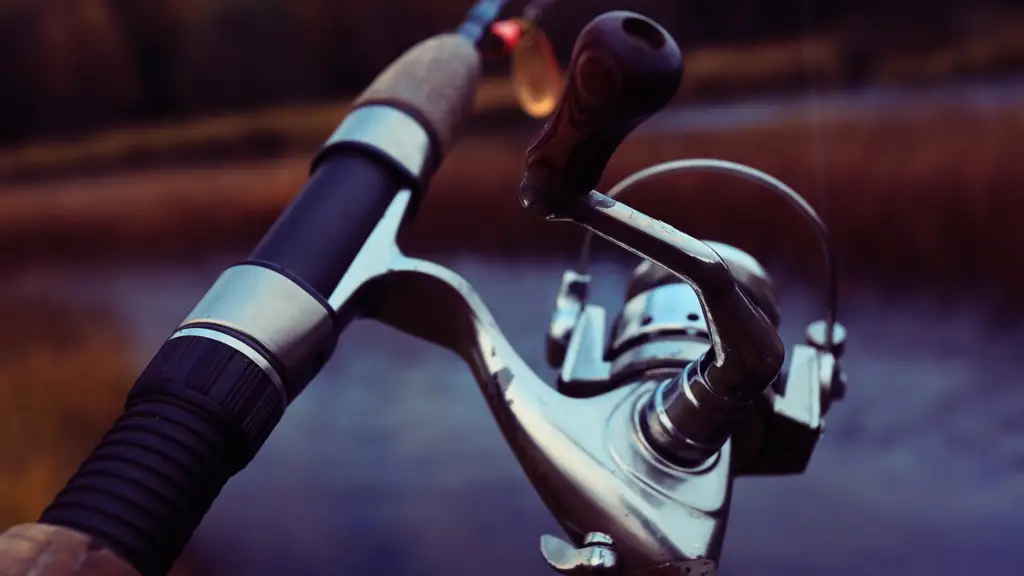
Bonus Tips
To gain consistent success with spring steelheads, you’ll need to switch up your lures, strategies, and locations. Here are four ways to catch more fish:
1. Fishing Gear
Most experienced anglers prefer a baitcasting setup over a spinning setup. Of course, there are specialist rods for various fishing tactics like pulling plugs, bobber/jigging, fly-fishing, etc. If you’re buying a rod for steelhead fishing, there are a few things to consider:
- The fishing method you’ll do most
- Size of the lure you’ll cast
- Type of Reels
- Line size
- Length of rod
- The warranty
2. Flow Rate
One basic rule is that steelhead enter rivers when the flow rate increases. The greatest times to fish are when the river rises and when it is falling.
Also, visibility is a real issue. If the steelhead can’t see your bait and the river surges, you’ll have to smack them in the mouth to capture them physically.
3. Location
Steelhead movement in the spring is heavily influenced by the desire to mate. The location of spawning sand is essential information. Fishing below gravel places in the drop-offs will produce outstanding results.
4. Time
Steelhead prefers the low-light settings of morning and evening as the days grow longer. This is true as the weather warms and the temperature rises in the middle of the day. Anglers who hit the stream early, take a rest for lunch and then hit it hard again in the last few hours before dark will be well rewarded.
As fish migrate out of their deeper holding positions and into the head of riffles and runs as they are ready to move under cover of darkness, it’s also a great time to fish faster water.
5. Target Depth
There are some reasons to go for depth when looking for steelhead in the spring. Steelhead resting in shallow water are often there to breed, aside from early and late in the day when fish are most likely moving.
6. Use of Eggs
Steelhead naturally visit streams in the fall to feed on salmon eggs, so anglers know to use egg patterns. In reality, they eat more eggs in the spring than in any other season. Leeches and steelhead will coexist in the same rivers, with the steelhead attempting to feed on the eggs carried away by leeches.
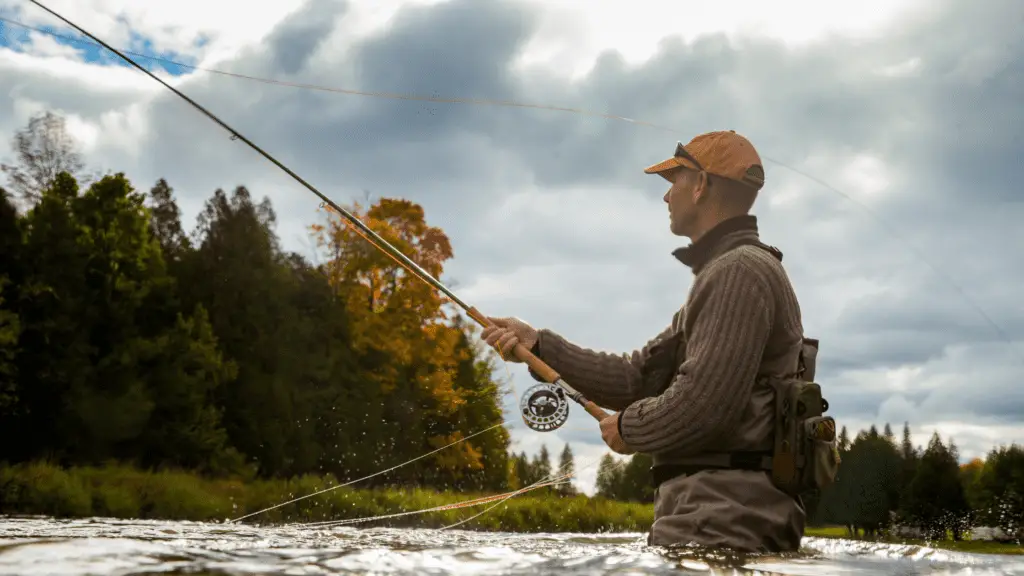
Conclusion
Spring is a fantastic time to go steelhead fishing. The climate warms, the crowds clear out, and plenty of fishes wait for those who want to fish one last time before the season ends. Spring is certain to become a favorite time of year to chase after these fish. Remember to adapt tactics and follow these guidelines!
Get out early this spring to fix your steelhead fever. Hopefully, a couple of these pointers will help you find and catch some silver-sided, fever-busting creatures. Best of luck, and take care out there!

